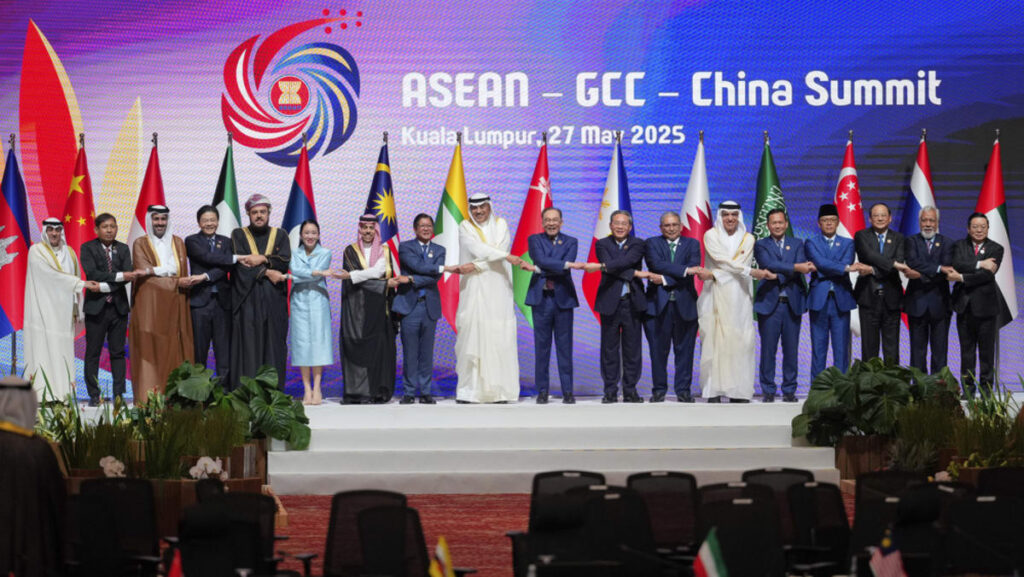DEEPENING STRATEGIC ALIGNMENT
Both Anwar and Li acknowledged the historical trade links between China as well as ASEAN and GCC countries, pointing to examples like the ancient Silk Road and the current Belt and Road Initiative (BRI).
The BRI is a massive China-led infrastructure project, adopted in 2013, that aims to stretch around the globe.
“China is willing to join hands with ASEAN and the GCC to fully harness the synergy of one plus one plus one being greater than three, and inject powerful momentum into the common development and prosperity of our three sides,” Li said in his opening remarks.
Beijing is also willing, on the basis of mutual respect and equal treatment, to “deepen strategic alignment” with both ASEAN and the GCC, improve macroeconomic policy coordination, and promote closer industrial collaboration, he said.
“Our countries are at various stages of development, but I believe these differences are not obstacles to cooperation – rather, they present opportunities for complementarity,” he added.
Li also called for a model for cross-civilisational integration, citing how the three regions are home to diverse and vibrant civilisations but yet “coexist peacefully in Asia and share common Asian values of peace, cooperation, openness, and inclusiveness”.
“Through greater understanding, we can manage differences more effectively, and through shared wisdom, we can strengthen mutually beneficial cooperation — together exploring a new path of inclusive coexistence among civilisations,” he added.
Li said on Monday that China looked forward to strengthening communication and cooperation with ASEAN and GCC nations to promote peace, prosperity and stability in Asia.
He echoed these sentiments in his opening remarks, saying that the new partnership could create a “model of global cooperation and development for this era”.
“Today, against the backdrop of an increasingly complex international environment and a sluggish global economy, the establishment of this trilateral summit presents an opportunity to continuously enrich the substance of our cooperation,” he said.
The GCC’s total commodity trade with China reached almost US$298 billion in 2023 while the bloc accounted for 36 per cent of China’s total crude oil imports that year, according to United Nations figures.
That same year, trade between ASEAN and the GCC amounted to around US$130.7 billion, making the Gulf bloc ASEAN’s seventh-largest trading partner.
China, meanwhile, remained ASEAN’s largest trading partner, with US$696.7 billion in trade and US$17.3 billion in foreign direct investment in 2023.
Anwar said these figures showed “immense existing linkages as well as substantial untapped potential”.
ASEAN, the GCC and China collectively represent a combined gross domestic product of US$24.87 trillion and a population of approximately 2.15 billion, he said.
“This collective scale offers vast opportunities to synergise our markets, deepen innovation, and promote cross-regional investment,” Anwar added.
“By strengthening collaboration in these areas, we can lay the foundation for stable, resilient and sustainable growth.”
Read the full article here
